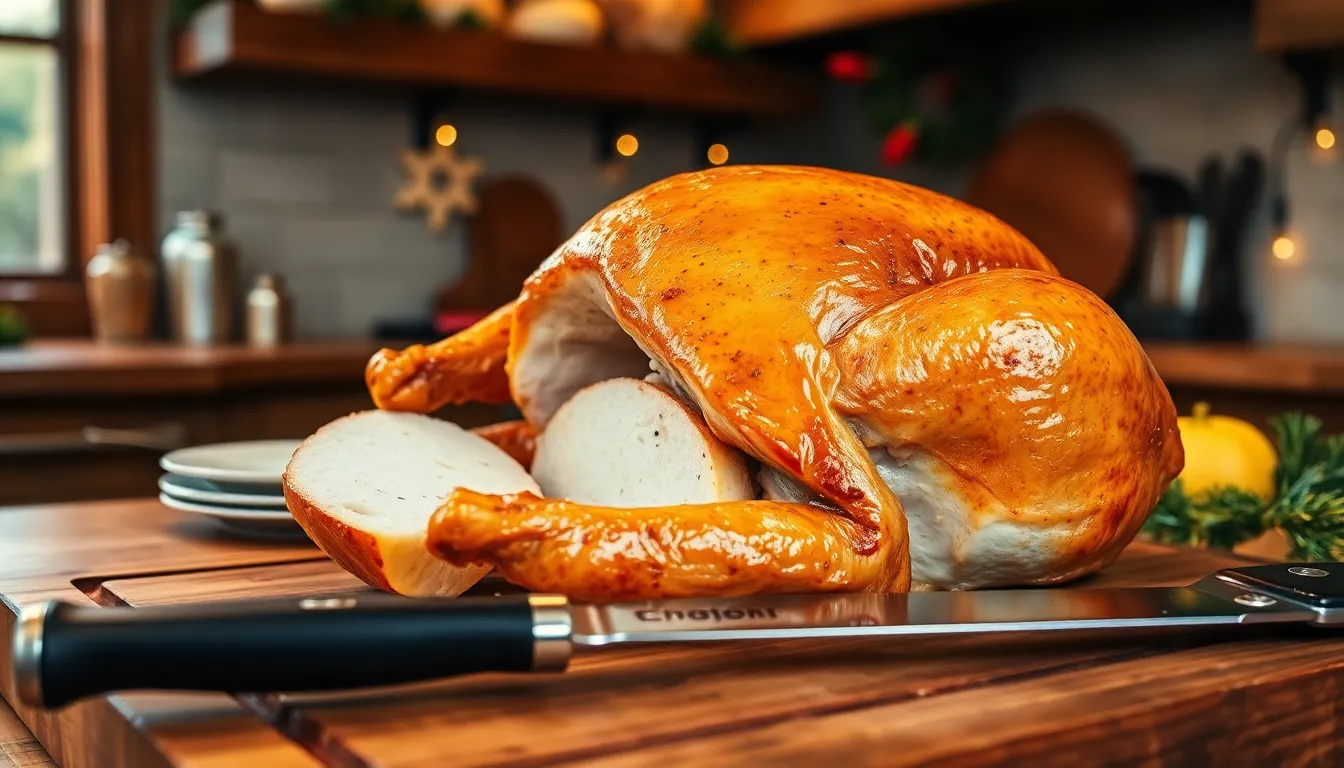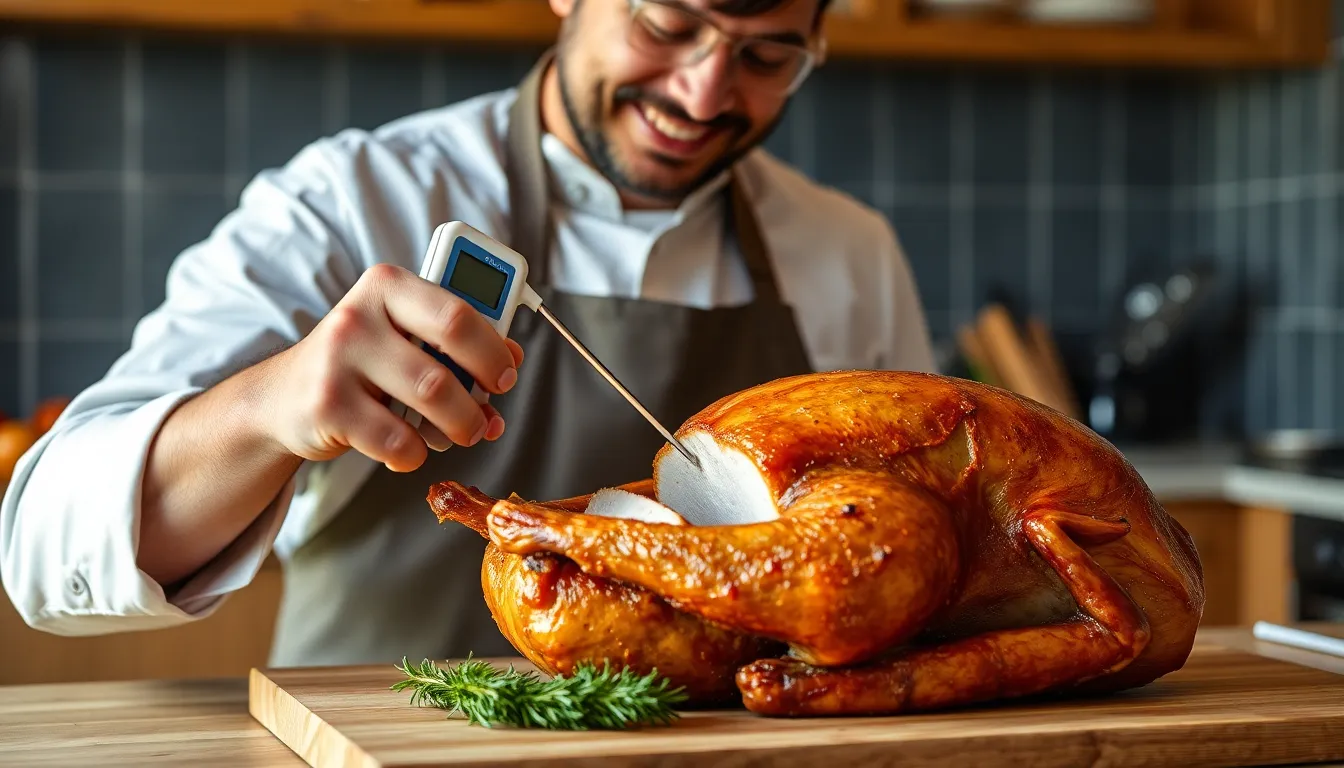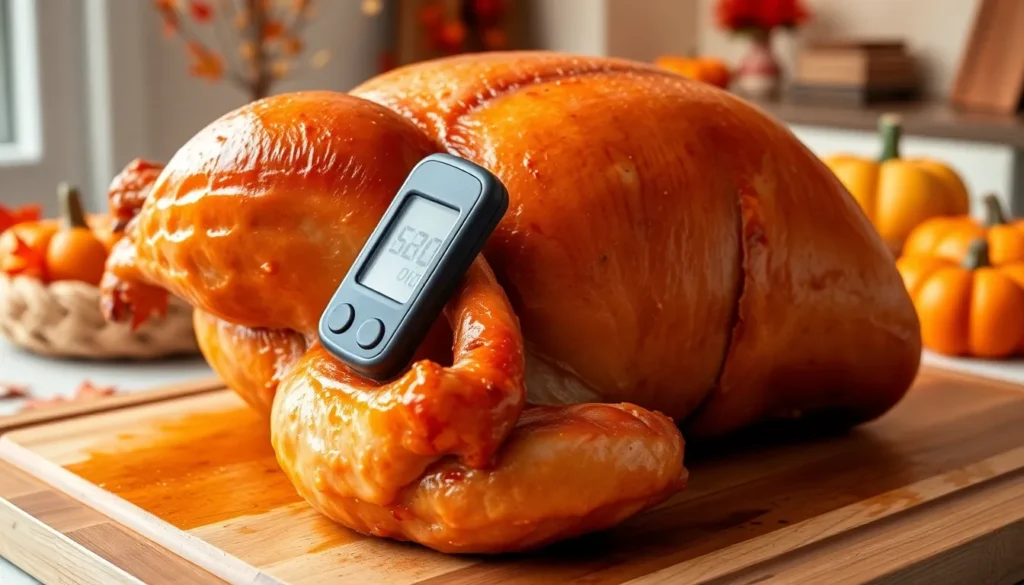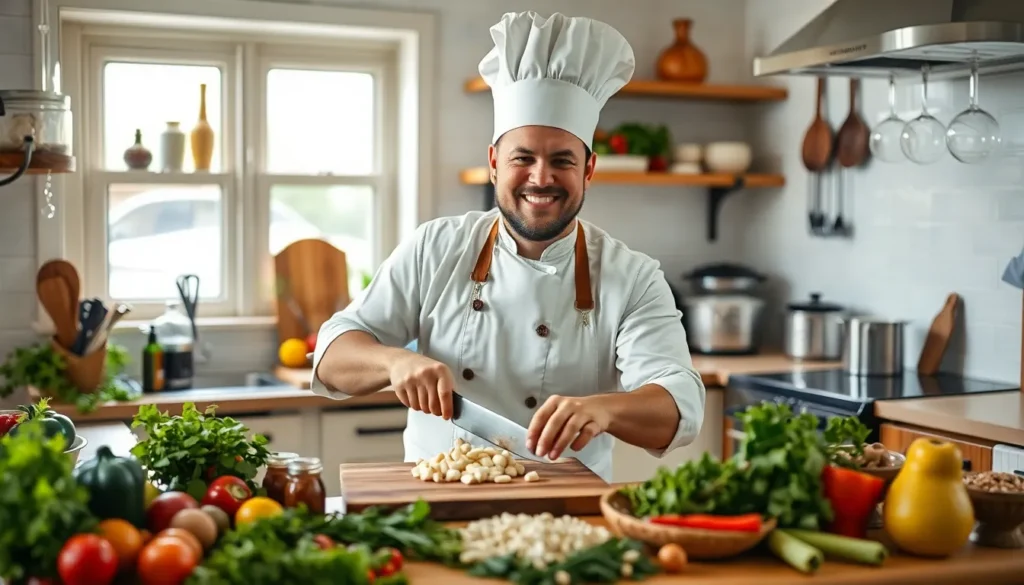When it comes to roasting the perfect turkey, knowing where to stick that thermometer can make all the difference between a juicy masterpiece and a dry disaster. No one wants to serve a turkey that’s more “gobble” than “gorgeous.” So let’s avoid that culinary catastrophe together!
Table of Contents
ToggleUnderstanding Thermometer Use
Using a thermometer correctly ensures that turkey is cooked safely and thoroughly. Proper placement of the thermometer can make a significant difference in the outcome.
Importance of Accurate Temperature Measurement
Accurate temperature measurement safeguards against undercooking or overcooking. The turkey must reach an internal temperature of 165°F for safe consumption, according to the USDA. Insufficient cooking may lead to foodborne illnesses, while overcooking dries out the meat. Avoid guessing by relying on visual cues or cooking times alone. Instead, employ a thermometer to achieve precision while cooking.
Types of Meat Thermometers
Various types of meat thermometers serve different needs. Instant-read thermometers provide a quick temperature read, suitable for checking doneness at the last moment. Probe thermometers remain in place during cooking, offering real-time temperature updates without opening the oven. Digital thermometers often include programmable settings for specific meats, adding convenience. Lastly, infrared thermometers measure surface temperature but don’t provide internal readings, making them less reliable for turkey. Each type has its advantages, so understanding their functions helps in selecting the best option for cooking turkey.
Ideal Locations for Inserting the Thermometer


Correct thermometer placement ensures accurate readings for delicious turkey. Focusing on two key areas maximizes success.
Thickest Part of the Turkey
Inserting the thermometer into the thickest part of the turkey yields the most precise reading. This area, often located in the turkey’s breast or thigh, retains heat efficiently. For optimal results, ensure the thermometer’s probe penetrates through the meat, avoiding fatty areas that may lead to inaccurate temperatures. Readings from this section help determine if the turkey has reached the necessary 165°F for safe consumption. Consistently measuring in this thick section provides the best assurance of doneness.
Distance from Bone
Positioning the thermometer away from bone is essential for accuracy. Bones conduct heat and can significantly affect the reading. Place the probe about an inch away from any bone to avoid false lower temperature indications. When measuring, keep the probe tip in the center of the meat for a correct internal temperature. This practice ensures the turkey cooks evenly, achieving both safety and optimal flavor. Following these practices leads to a well-prepared, juicy turkey.
Best Practices for Measuring Temperature
Accurate temperature measurement plays a vital role in ensuring turkey is cooked to perfection. Proper techniques guarantee a delicious, safe meal.
Ensuring Proper Insertion Depth
Insert the thermometer into the thickest part of the turkey for the most reliable reading. The breast and thigh areas usually provide the best results. Ensure the thermometer reaches at least 2 to 3 inches deep. This depth allows it to avoid contact with bones, which can skew temperature readings. Avoid inserting it into the cavity, as this might yield inaccurate temperatures. Checking for proper depth before taking a reading ensures reliable results.
Checking Different Areas
Different areas of the turkey may have varying temperatures. Focus on checking both the breast and thigh separately to ensure consistent cooking. Insert the thermometer into the inner thigh area, near the bone, but not touching it. Next, check the thickest part of the breast, positioning it horizontally if possible. When both areas reach 165°F, the entire turkey is cooked and safe to eat. Keeping track of these locations improves the accuracy of temperature checks.
Troubleshooting Common Issues
Proper thermometer usage ensures turkey is cooked perfectly. Misplaced readings can mislead cooks, while signs of overcooking or undercooking can spoil a meal.
Misplaced Thermometer Readings
Misplaced thermometer readings often result from incorrect insertion. Readers must avoid placing the thermometer too close to bones, as bones conduct heat and can yield false high temperatures. Instead, aiming for the thickest part of the turkey, either in the breast or thigh, enhances accuracy. For valid readings, thermometer depth should reach 2 to 3 inches. Checking the temperature in multiple spots is also recommended to avoid inconsistencies. If readings fluctuate significantly between areas, they indicate improper placement or a malfunctioning device. Thus, ensuring correct technique leads to reliable temperature results.
Overcooked or Undercooked Indicators
Overcooked or undercooked indicators manifest in turkey texture and juiciness. When turkey reaches more than 180°F, dryness and toughness typically occur, leading to a less enjoyable meal. Conversely, temperatures below 165°F signify undercooking, posing safety risks. Juicy, tender turkey results from perfect cooking within the 165°F to 175°F range. Utilizing the thermometer frequently during cooking enables cooks to monitor shifts in temperature. If turkey exhibits an uneven color or excessive juices, it’s essential to verify temperatures at various points for assurance. Practicing these steps minimizes the risk of undesirable results and guarantees a delicious dish.
Proper thermometer placement is crucial for achieving a perfectly cooked turkey. By focusing on the thickest parts of the breast and thigh while avoiding bones cooks can ensure accurate temperature readings. Monitoring multiple areas helps confirm that the entire turkey reaches the safe internal temperature of 165°F.
Using a thermometer not only enhances food safety but also guarantees a juicy and flavorful turkey. With the right techniques and tools in hand anyone can elevate their turkey cooking game and impress their guests. So next time you roast a turkey remember that precision is key for a delicious outcome.













